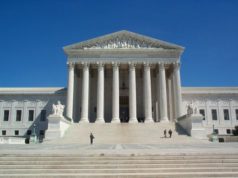Table of Contents

Introduction
The United States of America is a nation that is founded on the principles of liberty and private property rights. The Fifth Amendment of the U.S. Constitution explicitly prohibits the government from taking away private property without just compensation. However, the doctrine of eminent domain allows the government to take private property for public use, provided that the owners are compensated fairly. This article will explore the concept of eminent domain and how it affects property rights in the United States.
What is an Eminent Domain?
Eminent domain is the power of the government to take private property for public use. This power is derived from the Takings Clause of the Fifth Amendment, which states that no person shall be deprived of life, liberty, or property without due process of law, nor shall private property be taken for public use without just compensation. The government can exercise this power at the federal, state, and local levels.
Eminent domain is used to acquire property for a wide range of public purposes, such as constructing highways, building schools, and expanding public utilities. When the government takes private property, it must provide the owners with just compensation, which is typically fair market value for the property. The purpose of just compensation is to ensure that the owners are not left worse off as a result of the government’s actions.
Eminent domain cases
Over the years, there have been numerous eminent domain cases that have made headlines and sparked controversy. Some of the most notable cases include Kelo v. City of New London, Berman v. Parker, and Hawaii Housing Authority v. Midkiff. These cases illustrate the complexities and legal challenges that arise when the government exercises its power of eminent domain.
Kelo v. City of New London
Kelo v. City of New London is perhaps the most controversial eminent domain case in U.S. history. It involved a group of homeowners in New London, Connecticut, whose properties were slated for acquisition by the city in order to make way for a private development project. The project was intended to revitalize the city’s struggling economy by creating jobs and generating tax revenue.
The homeowners argued that the use of eminent domain in this case was unconstitutional because it was not being used for a public purpose as required by the Takings Clause. They also argued that the compensation being offered by the city was not just, since it did not take into account the sentimental value of their homes.
In a 5-4 decision, the Supreme Court ruled in favor of the city of New London. The Court held that the project constituted a valid public use under the Takings Clause, since it would provide economic benefits to the community. The Court also held that the compensation being offered was just, since it was based on fair market value.
The Kelo decision was widely criticized by property rights advocates, who argued that it represented a dangerous expansion of the government’s power to take private property. Some states responded by enacting laws to limit the use of eminent domain for private economic development.
Berman v. Parker
Berman v. Parker was a 1954 Supreme Court case that helped establish the broad scope of the government’s power of eminent domain. The case involved a redevelopment plan in the southwest area of Washington, D.C., which was deemed to be blighted and in need of improvement.
The plan involved the acquisition of numerous properties in the area, many of which were owned by low-income residents. The owners argued that the use of eminent domain in this case was unconstitutional because it was not being used for a public purpose.
In a unanimous decision, the Supreme Court upheld the government’s use of eminent domain in this case. The Court held that the redevelopment plan was a valid public use under the Takings Clause, since it would eliminate blight and promote the public welfare. The Court also held that the compensation being offered was just, since it was based on fair market value.
The Berman decision has been cited as a precedent for subsequent eminent domain cases, including Kelo v. City of New London. It has been criticized by some property rights advocates, who argue that it represents a broad interpretation of the government’s power to take private property.
Hawaii Housing Authority v. Midkiff
Hawaii Housing Authority v. Midkiff was a 1984 Supreme Court case that involved the use of eminent domain by the state of Hawaii to break up a land oligopoly. The case was brought by a group of tenants who were seeking to purchase the land on which their homes were situated.
The land was owned by a small number of individuals and corporations, who had acquired it through a series of sales and transfers. The state of Hawaii used its power of eminent domain to acquire the land, which was then sold to the tenants at a reduced price. The owners argued that the use of eminent domain in this case was unconstitutional because it was not being used for a public purpose.
In a unanimous decision, the Supreme Court upheld the government’s use of eminent domain in this case. The Court held that the state had a legitimate public purpose in breaking up the land oligopoly, since it would promote competition and reduce inequality. The Court also held that the compensation being offered was just, since it was based on fair market value.
The Midkiff decision has been cited as a precedent for subsequent eminent domain cases, particularly those involving the use of eminent domain to promote social justice and economic equality.
Conclusion
Eminent domain is a complex and controversial issue that raises fundamental questions about property rights and the role of government in society. While the doctrine of eminent domain is rooted in the Fifth Amendment’s takings clause, the application of this power can be fraught with legal and ethical challenges. The cases of Kelo v. City of New London, Berman v. Parker, and Hawaii Housing Authority v. Midkiff illustrate the nuances and complexities of eminent domain law in the United States. Whether the power of eminent domain is used for private economic development, urban renewal, or social justice, it will continue to be a source of controversy and debate among legal scholars, policymakers, and property owners.
The views of eminent domain are applied to the Fifth Amendment of the Constitution which dictates that no private property can be taken for public use without compensation. This doctrine recognizes the powers that existed beforehand and the actions of it seizing private property for public use rather than establishing the property to a new power.
The rule of eminent domain applies to the all-independent governments, which in earlier years were not a part of a practiced law.
It was not until 1976 that powers of eminent domain were recognized by the Supreme Court. It was the case of Kohl v. the United States where the Supreme Court affirmed that eminent domain was a requirement to the applications of the National Government just as it was to the application of any State.
The Federal power of eminent domain has limitations expressed by the Constitution, where the property may only be recovered for the benefit of a granted power. However, this rule applies to a number of objects that may be affected under national powers. Under the provisions of the eminent domain, the rights of the National Government cannot be enlarged or declined by any State.
It is true that any land within a State is for the State’s purpose, yet if Congress authorizes the need for that piece of land or property, they have the right to issue recovery. They can do so either by proceeding with a hearing in the courts of the State, with the State’s agreement or by proceeding within a court of the United States with or without a State’s consent.
Before the application of the Fourteenth Amendment, the ability to apply eminent domain to State governments was not limited by the Federal authorities. Moreover, the rightful compensation of the Fifth Amendment did not apply to the states. When the conditions of the eminent domain first applied the measure of protection governed by the Due Process Clause of the Fourteenth Amendment, it was not applicable to states.
It was not until 10 years later that the Supreme Court ruled that the argument of compensation awarded to a State eminent domain case was not only applicable to local laws. The Supreme Court declared that even if a State Legislature may apply the procedure of private property for public use, it is not the State’s right to declare due to compensation for a private property recovered for public use.
The Supreme Court guarantees the compensation flow from the eminent domain from two different sources, identifying that the cases of eminent domain should be reviewed by both State and Federal governments. The Supreme Court made it clear that the conditions of eminent domain will only be exercised by legislation and they have the right to extend this power to private corporations, such as public utilities as well as railroad and bridge companies, when it is in need of a valid public purpose.
The conditions of eminent domain expressed by the Supreme Court made it aware that recovering a private property was not the decision of the State Government. In order for the process to be clarified as a valid person, the case of the eminent domain needs to be reviewed by the Supreme Court.

























